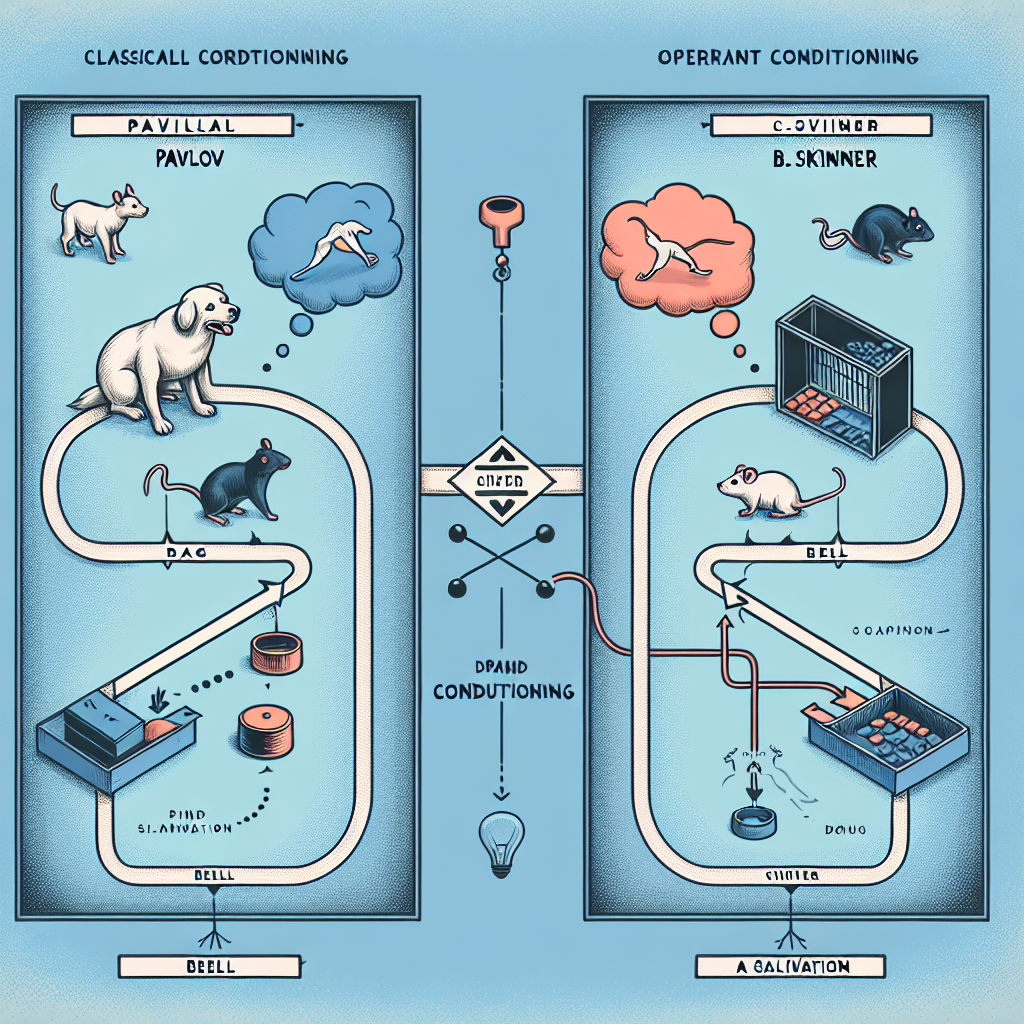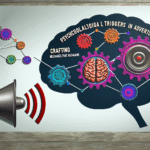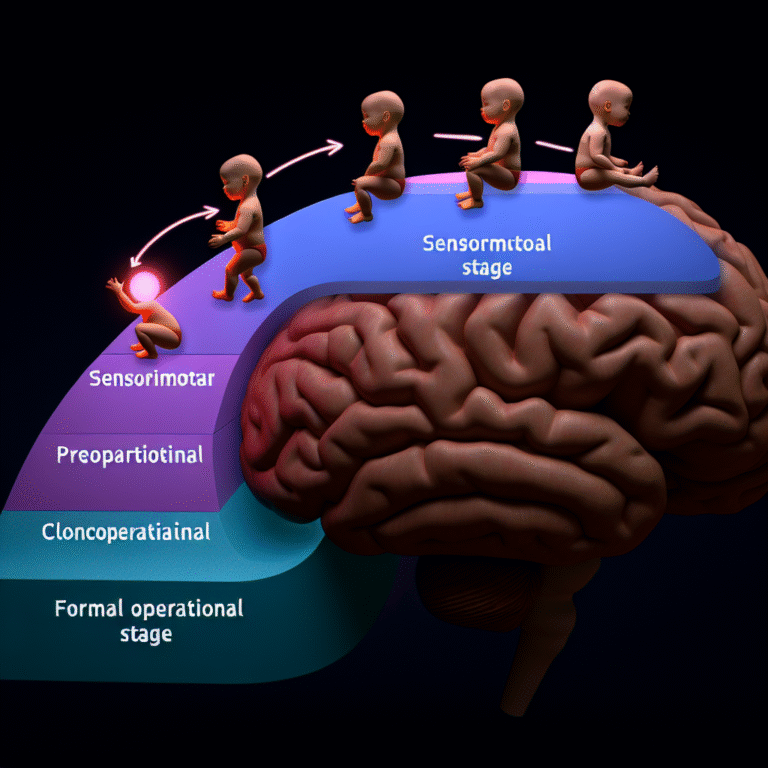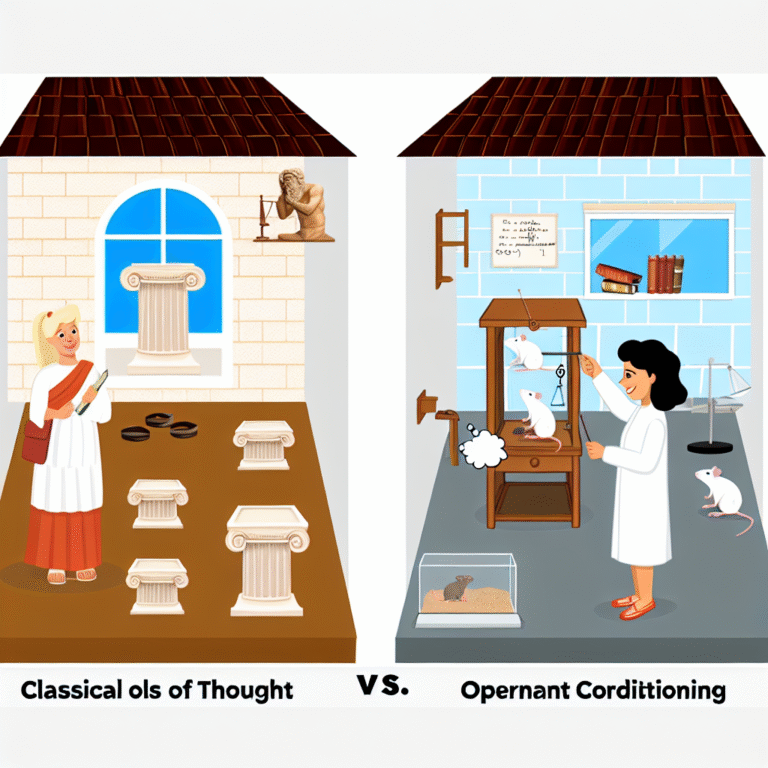
From Pavlov to Skinner: Exploring the Divergent Paths of Conditioning Theories
Introduction
Imagine entering a room where the mere sound of a bell triggers a reaction you never thought possible. This vivid scenario, drawn from the groundbreaking experiments of Ivan Pavlov, highlights the extraordinary power of conditioning—a concept that has shaped our understanding of behavior for over a century. The journey from Pavlov to B.F. Skinner represents not only a shift in psychological paradigms but also an essential exploration into how we learn, adapt, and respond to our environment. In this article, we dive deep into the divergent paths of conditioning theories, examining their nuances, applications, and lasting impact on psychology and society.
The Foundation of Conditioning Theories
Ivan Pavlov: Classical Conditioning Unveiled
Ivan Pavlov, a Russian physiologist, stumbled upon a revolutionary concept while conducting experiments on dogs in the late 19th century. Pavlov noticed that the dogs would salivate not only when food was presented but also when they heard the footsteps of the researcher or when a bell was rung. This phenomenon led to the formulation of classical conditioning, where a neutral stimulus (the bell) became associated with an unconditioned stimulus (food), resulting in a conditioned response (salivation).
Case Study: Pavlov’s Dogs
Pavlov’s experiments demonstrated how an involuntary physiological response could be conditioned through associative learning. The implications of his findings reach far beyond mere dog training. In modern psychology, classical conditioning principles are widely applied in therapeutic settings to treat phobias, manage anxiety, and enhance learning techniques. The real-world relevance of Pavlov’s work is evident in techniques like systematic desensitization, where patients are gradually exposed to fear-inducing stimuli in a controlled environment.
B.F. Skinner: The Birth of Operant Conditioning
While Pavlov focused on involuntary responses, B.F. Skinner introduced a new dimension to conditioning theories: operant conditioning. Drawing on Edward Thorndike’s Law of Effect, Skinner posited that behaviors are shaped by their consequences. Through reinforcement (positive or negative) and punishment, individuals learn to modify their actions based on outcomes.
Case Study: The Skinner Box
Skinner’s experiments with rats in a Skinner box illustrated how behaviors could be reinforced or extinguished. When a rat pressed a lever and received food, it was more likely to repeat the behavior. Conversely, if pressing the lever resulted in a mild electric shock, the rat would avoid it. This fundamental concept has had profound implications, influencing educational practices, workplace productivity strategies, and behavioral therapies.
Diverging Theoretical Frameworks
The Mechanism of Learning: Associative vs. Instrumental
At the heart of the divergence between Pavlov and Skinner lies their approach to learning mechanisms. While Pavlov’s classical conditioning focuses on how associative learning occurs between stimuli, Skinner’s operant conditioning emphasizes the role of behavior in an environment shaped by reinforcements and consequences. In essence, it transforms the learner from a passive recipient of stimuli (as in classical conditioning) to an active participant in their learning experiences (as in operant conditioning).
Table 1: Key Differences Between Classical and Operant Conditioning
| Feature | Classical Conditioning | Operant Conditioning |
|---|---|---|
| Type of Behavior | Involuntary (reflexive) | Voluntary |
| Learning Process | Associative learning | Behavioral modification |
| Role of Environment | Neutral stimuli create responses | Environment shapes behavior |
| Key Figures | Ivan Pavlov | B.F. Skinner |
| Applications | Therapy for phobias | Education, parenting, workplace |
The Role of Reinforcement
In exploring the divergent paths of conditioning theories, one cannot overlook the concept of reinforcement. In Skinners’ model, reinforcement is a critical tool used to increase the likelihood of a desired behavior. It can be classified into positive reinforcement (adding a pleasant stimulus) and negative reinforcement (removing an unpleasant stimulus).
On the other hand, Pavlov’s theory, while acknowledging indirect reinforcement through practice and recency, primarily highlights the significance of associations formed by stimulus pairing. The different approaches highlight how behaviorally driven reinforcement mechanisms can lead to distinctly different learning outcomes.
Case Study: Reinforcement in Classroom Settings
A contemporary example of operant conditioning’s relevance can be found in classroom management techniques. Teachers who use positive reinforcement—like praise or rewards—encourage student participation and engagement. In contrast, strategies based on classical conditioning, such as creating a calm classroom environment associated with pleasant experiences, can also lead to improved learning outcomes.
Expanding Applications in Real Life
Therapy and Behavioral Modification
Both classical and operant conditioning have been instrumental in the development of various therapeutic approaches. Classical conditioning techniques are applied in treating phobias through systematic desensitization, while operant conditioning forms the basis of programs aimed at modifying behaviors, such as token economies in schools or behavioral therapy for autism spectrum disorder.
Table 2: Therapeutic Applications of Conditioning Theories
| Conditioning Theory | Application | Example |
|---|---|---|
| Classical Conditioning | Phobia Treatment | Systematic Desensitization |
| Operant Conditioning | Behavior Modification | Token Economies, ABA Therapy |
Marketing and Consumer Behavior
The principles of conditioning theories extend beyond psychology; they permeate marketing and consumer behavior. Marketers leverage classic conditioning by associating products with favorable music, imagery, and emotions to trigger positive responses. Meanwhile, operant conditioning comes into play when businesses utilize reward systems, loyalty programs, or discounts to encourage repeat purchases.
Case Study: Coca-Cola’s Holiday Marketing Campaign
A pertinent example aligning with classical conditioning is Coca-Cola’s iconic holiday advertisements featuring Santa Claus. Over the years, viewers have formed positive associations between the brand, holiday cheer, and family gatherings. As a result, the product becomes a staple of these seasonal celebrations, demonstrating the effective use of conditioning in marketing.
Charting the Future: The Integration of Concepts
Bridging the Gap Between Theories
Modern psychology increasingly recognizes the potential of integrating principles from both classical and operant conditioning. This synthesis leads to a more comprehensive understanding of learning and behavior. For instance, behavioral therapies may employ classical conditioning to establish new, desired responses while using operant techniques to maintain those behaviors.
Chart 1: Interdisciplinary Approach in Conditioning
This chart would illustrate the complementary nature of classical and operant conditioning, showcasing overlapping applications in fields like education, therapy, and behavior modification.
The Role of Cognitive Processes
While conditioning theories primarily emphasize observable behavior, advancements in cognitive psychology suggest that internal thought processes also play a significant role in learning. Cognitive Behavioral Therapy (CBT) illustrates this merging by addressing both behavioral conditioning and cognitive restructuring, thereby creating a more holistic approach to understanding and modifying behavior.
Conclusion
From Pavlov to Skinner: Exploring the Divergent Paths of Conditioning Theories has illuminated key insights into how our understanding of learning and behavior has evolved. The rich tapestry woven by these two pioneers continues to shape diverse fields, from therapy to marketing, highlighting the impact of conditioning on everyday life.
In closing, embracing these theories can empower us to harness the principles of learning and behavior modification, providing actionable insights to meet our psychological and educational needs. By integrating both classical and operant conditioning principles, we create a roadmap for not only understanding but predicting and guiding behavior in a complex world.
FAQs
1. How did Pavlov’s and Skinner’s theories influence modern psychology?
Both theories laid the groundwork for behavioral psychology, influencing therapeutic techniques, educational methods, and our understanding of human and animal behavior.
2. Can conditioning theories apply to animals as well as humans?
Yes, conditioning theories are applicable to both animals and humans. Classical and operant conditioning principles are widely used in animal training and behavioral research.
3. What are some real-world applications of Pavlov’s classical conditioning?
Pavlov’s classical conditioning is applied in therapy for phobias, language acquisition, and even marketing strategies that create brand associations.
4. How can I use operant conditioning in everyday life?
You can use operant conditioning by employing a system of rewards and consequences in various contexts, such as parenting, managing workplace behaviors, or even modifying personal habits.
5. Are there criticisms of conditioning theories?
Yes, some criticisms highlight the oversimplification of behavior and the neglect of cognitive processes. Critics argue that internal thoughts and motivations also play a crucial role in learning.
Thus, as we conclude our exploration from Pavlov to Skinner, we celebrate their legacies while recognizing the dynamic nature of psychological discovery, revealing that our journey into understanding behavior is far from over.
















